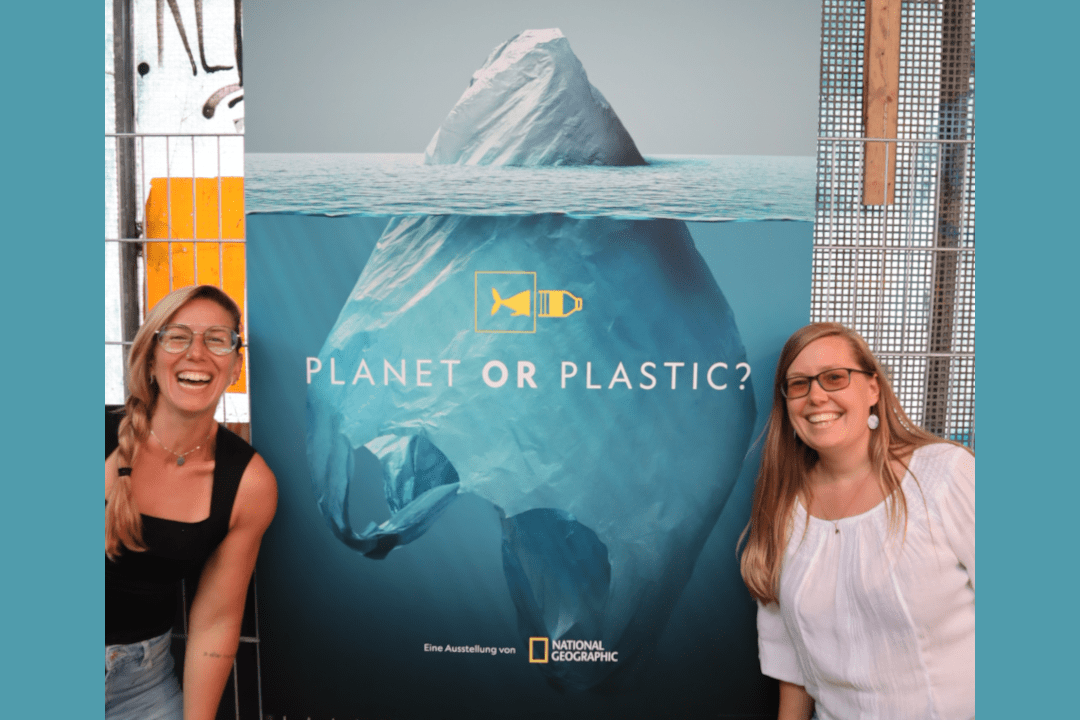Inspired by National Geographic’s ‘Planet or Plastic?’ photo exhibition
Art-science collaborations and the ‘Ocean Decade’
The United Nations (UN) Ocean Decade (2021-2030) is well under way. Over the next 10 years, we’ll continue to see an increase of events, initiatives and collaborations between scientific institutions, governments, policy makers, universities and private enterprise, all focusing on creating a healthier and more resilient ocean.
One of the primary aims in what the UN is calling a ‘revolution’, is to create an “inspiring and engaging ocean” where society understands and values the benefits of protecting the seas. However, asserting such universalising narratives are complex and never apolitical as there are many layers of communities who are often excluded from society. Given that a significant focus of attention will be on ocean research over the next 10 years, public communication will be imperative for engaging with audiences beyond academic institutions. A critical tool for doing this will be through using the arts, and so being perceptive to the ways that art is used to present some of the greatest environmental challenges humanity faces requires attention.
‘Planet or Plastic?’ photo exhibition
Although not directly related to the UN Ocean Decade, one project which focuses on merging photography with one of the most pressing environmental issues facing oceans is National Geographic’s ‘Planet or Plastic?’, a traveling photo exhibition showcasing some of the magazine’s most striking images exploring the relationship between plastic waste and the sea.
We, as a group of early career researchers investigating marine biodiversity, visited the exhibition together in May shortly after it premiered at the Gleispark in Oldenburg, Germany.
Through photographs, infographics and captions, the exhibition charts the social, economic and environmental history of plastic. Initially emerging as an environmentally friendly solution, due to its low cost, durability, heat-resistance, sterility, and diversity of commercial uses, the production of plastic grew exponentially throughout the 20th century. Through the alliance of petroleum and chemical companies, plastic revolutionised industrial production and has been central to the global economy, to the point that nowadays most societies are immensely dependent on plastic and its derivatives.
Yet, plastic affects both our terrestrial and watery worlds, eventually ending up flushed, circulating and floating at sea. There, the damages are numerous and, to a large extent, not easily dealt with, especially when it comes to microplastic.
‘Fixing’ plastic
The exhibition displays plastic-related problems through some well-known, nearly iconic images such as one of a dead albatross with a stomach full of plastic taken by David Liittschwager and Susan Middleton in Hawaii. Highlighted are also a few examples of initiatives that try to tackle part of the problem, mostly focusing on technological fixes, such as high-tech recycling and changing individual behaviours. These techno-fixes sound promising and enticing. They tend to bring us comfort and a warm, soothing feeling that “the problem is being taken care of”. However, a more nuanced perspective on the emergence of plastic and how it came to thoroughly pervade the so-called ‘modern societies’ begs relevant questions: Are market-based alternatives to plastic really going to solve the problem? Indeed, what is the problem we are trying to solve?
The tip of the iceberg
The exhibition title opens with a provocation, ‘planet or plastic?’ Yet, plastic is made by (some) humans, primarily derived from crude oil, natural gas, and coal — fossil fuels, formed from ancient marine organisms found in underground reservoirs. How can we move beyond this binary and think of plastic as part of the planet, while critically engaging with the logistics of production, consumption, and who is bearing the costs of the technological fixes used and promoted in wealthier countries? Yes, lowering our individual consumption of plastic is important, but how much of the plastic produced ends up directly in our hands? Are we only focusing on the tip of the iceberg and missing the depth and complexity of the plastic crisis as suggested by the cover image of the exhibition?
After viewing the first few photographs at the exhibition, we noticed that our different professional backgrounds, ranging from art, ecology to human- and marine geographies, led to interesting discussions as we started sharing our perspectives, knowledge and opinions. We realised that there were a number of points to discuss and critique. The title, images chosen, the statistics and the information presented offered a simplistic presentation of plastic pollution. The scale of the problem, the ethics involved and how societies deal with the resulting problems seemed to be missing.
Oceans and Plastics blog series
We decided to write an Oceans and Plastics blog series sharing some of the discussions inspired by visiting the exhibition. The series includes a critique of the exhibition itself, interviews with the organisers, an exploration of art ethics and the environment, the role of recycling and the movement of plastic, the geopolitics of individual and state responsibilities and also countering narratives from the Global South. By doing so, we will offer an analysis of the exhibition and argue that thinking with oceans can help us reveal and deepen our understanding of plastic. We hope you will enjoy taking part in our discussions, examining conscious and unconscious biases, and learn alongside us as we explore the topic of ‘plastic’ from different perspectives and with a local focus on Oldenburg.
Stay tuned to our next posts on this series:
- Behind the scenes of the National Geographic exhibition ‘Planet or Plastic?
- Unpacking Plastic Oceans – Placing Photography in Environmental Storytelling
- Plastic Geopolitics – Narratives from the South
Geraint Rhys Whittaker, Jasmin Groß, Josie Antonucci Di Carvalho, Paula Satizábal, and Rebecca Borges
*All authors contributed equally and are listed in alphabetical order.
